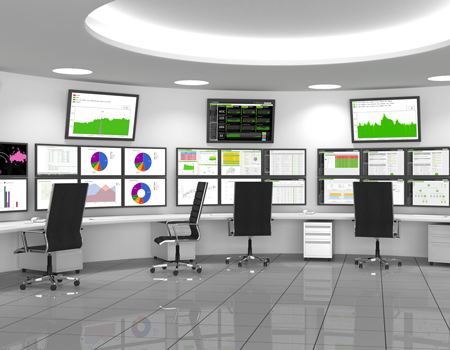Environmental Monitoring: Crucial to Data Center Success
The Data Center Is an Ecosystem
 Data centers make up a unique eco-system of their very own. Keeping equipment cool is a necessity – but too much cooling can lead to excessive energy costs. Properly separating hot exhaust air and cold supply air is also a must to prevent hot air from cycling back to the IT equipment intake, and cool air from returning to the cooling unit. (For more about these cooling issues, read our post, "To HAC or CAC? That is the Question".)
Data centers make up a unique eco-system of their very own. Keeping equipment cool is a necessity – but too much cooling can lead to excessive energy costs. Properly separating hot exhaust air and cold supply air is also a must to prevent hot air from cycling back to the IT equipment intake, and cool air from returning to the cooling unit. (For more about these cooling issues, read our post, "To HAC or CAC? That is the Question".)
But how do you know if your data center’s CRAC (computer room air conditioner) is working? Do you wait until your servers overheat? Should you walk through the space to see which areas feel too cold or hot?
Critical Areas to Monitor
To determine the effectiveness of your CRAC, you’ll want to rely on facts – temperature, airflow, humidity levels, etc. in a given room, row or rack – vs. how the environment “feels.” The best way to gather this data is to constantly monitor three crucial areas:
1. In the Rack
Track the temperature in each rack. Temperatures are highest at the rear and the top of the rack, so place a probe there to measure exhaust temperature and airflow. Intake temperature and airflow should also be monitored at the front and bottom of a rack, where readings will be the lowest.
If aisle containment is part of your cooling management strategy, place environmental sensors in the aisles to monitor what’s happening within a cooling zone.
Many data center managers also measure internal system and CPU temperatures. The more temperature information you can gather, the faster you can identify and address issues before they negatively affect downtime and productivity.
2. Under the Floor
Air pressure sensors will tell you whether there is enough cold air under the floor. If cold air is lacking, cabling obstructions or other obstacles may reduce the cold airflow under the floor, which decreases cold air supply.
3. In the Room
Monitor ambient temperature throughout the room to identify hotspots or place context around comments regarding the “feel” of the room temperature. Humidity levels should also be analyzed; placing sensors up high in open areas away from direct heating and cooling sources will help provide accurate data.
As you track and trend temperature and airflow measurements over time, you’ll also be able to benchmark performance and understand how certain server demands or processes affect the environment.
Also Worth Monitoring
 In addition to monitoring temperature, there are other things you should watch in your data center as well:
In addition to monitoring temperature, there are other things you should watch in your data center as well:
- Fire suppression. Although these systems are rarely (if ever) used, it’s vital that fire suppression systems work in a fire situation. An active monitoring system can help ensure that equipment is always functional – and warn you when it’s not.
- Water leaks. Water infiltration is very dangerous to servers and systems; place leak detectors/water sensors near the AC units, near drain openings, along rack bottoms and under piping to learn about issues as soon as they arise.
- Static electricity. If data center air is too dry, or if metal equipment isn’t properly grounded and bonded, electrostatic discharge can damage systems and harm employees. Static electricity monitoring equipment can be placed in intervals around the data center to watch for potentially large charges.
- Accessibility. An often-overlooked component of environmental monitoring and assessment involves who – and what – is inside your data center. Monitoring access, door openings and other activities paints a picture of environmental conditions, and provides an audit trail if any suspicious activity were to occur.
Monitoring & Assessment Solutions
Belden offers a wide variety of environmental monitoring and assessment solutions to prevent potential threats to data center performance: PDUs with built-in probes that monitor temperature, access controls and data center security systems, and aisle containment systems that interface with smoke and fire alarm systems.
To learn more about monitoring and assessing your data center environment, call 1.800.BELDEN or visit www.belden.com.
